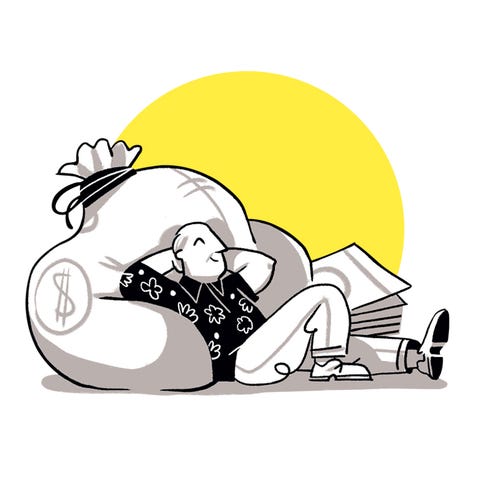How to Save for Retirement in Every Decade of Your Life
Unlike your cholesterol, your blood pressure, and your mile time, your savings may be one of those few things you actually want increasing with age. And no mater your age, there’s always a way to add a bit more to that savings pot. Arielle O’Shea, a finance journalist for NerdWallet, helps you navigate the decades and reach your retirement goals.
Your 20s

Marta Signori
Welcom to the real world. Step 1: Start saving for retirement—like now! The earlier you start, the longer your investment has to grow and the less you’ll have to save over time, says O’Shea. If you’re at your first job, look at your 401(k) or employer plan and find out what percentage of your retirement investment your company is willing to match. Shoot to mirror that. (So if it matches up to 6 per-cent, try to contribute 6 percent from each pay-check.) “A lot of people think they should pay down their student-loan debt first, or build up this big emergency fund, but those matching dollars are instant return on your investment,” says O’Shea.
For the rest of your paychecks, follow the 50-30-20 rule of budgeting: Fifty percent of your income after taxes goes toward necessities (food, housing, transportation). Thirty percent goes toward discretionary spending (entertainment, dining out, dates). And 20 percent goes toward savings (including both retirement savings and a cash cushion, or long-term payments for, say, buying a car).
Your 30s

Marta Signori
You’re on your way: (hopefully) paying off those loans and (maybe) having kids. How do you pre-pare for the crunch?
Many have adopted FIRE plans (Financial Independence, Retire Early), but this strategy is incredibly difficult, says O’Shea. “You have to be a person who can either save a huge portion of your income (and FIRE people save 40, 50, 60 percent of their income) and live on very little money or else take side jobs to supplement your income.” Not unadvisable, just difficult.
More difficult still is having children, which will make retiring early harder. “A lot of people think that when they have children, they should start saving fort heir kids (like for college) instead of for themselves,” says O’Shea. Instead, keep saving for retirement.
So keep aiming for a 15 percent savings mark. This doesn’t have to all flow into your 401(k), though. Look into a Roth IRA, which lets you invest after-tax dollars, meaning your money will grow and be ready to withdraw tax-free. A Roth IRA also allows you to withdraw money anytime, in case you find yourself out of work and need emergency funds. (The recommendation is to save at least three to six months of essential living expenses.)
But the best thing you can do in your 30s is avoid inflating your lifestyle as your salary increases. Living within your means will pay off in the long run.
Your 40s

Marta Signori
You’re getting closer. “Continue saving for your retirement,” says ArielleO’Shea, “because there’s no financial aid for that.” So ramp up your 401(k) contributions and use online tools like NerdWallet’s retirement calculator to determine your progress.
Your mortgage should carry a low interest rate, so don’t accelerate those payments to the detriment of your retirement savings. Working longer should never be a Band-Aid for not saving enough, but looking for a new job that feels fresh and provides a higher salary may help motivate you to work longer, should you have to.
Your 50s … and Beyond!

Marta Signori
You’re near the finish line. Most retirement accounts permit catch-up contributions, so if you haven’t been hitting that 15 percent contribution goal over the past couple decades, you have higher contribution limits once you reach 50. Take advantage of these. “You can save an extra $6,000 in your 401(k) and an extra $1,000 in your Roth IRA each year,” notes O’Shea. Start keeping a few years’ worth of income in cash, or something that isn’t volatile—like a fixed-income investment, says O’Shea. That way, if the markets go south, your money won’t go with them. But don’t cash everything in too early. You still need your money to grow. Dial back the risk a little, but continue to invest in stock sand growth investments. You’re almost there.
Source: Read Full Article



